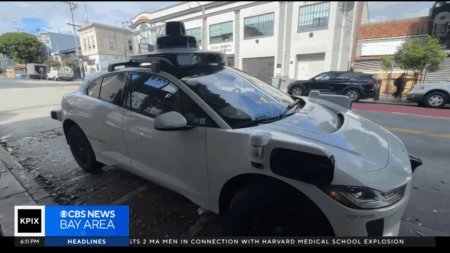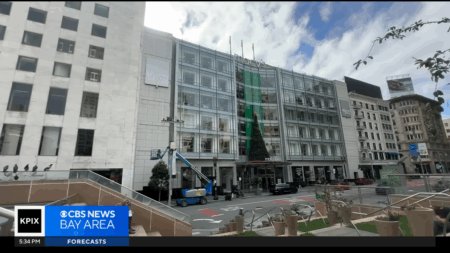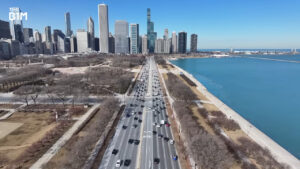Preparing for NJ Transit’s Rail Strike: Essential Information for Commuters
NJ Transit is on the brink of a historic rail strike, the first in decades, which is set to disrupt travel for thousands of commuters throughout New Jersey. As labor talks stall, the transit authority has issued a critical alert urging passengers to anticipate service interruptions and consider alternative travel arrangements. This strike threatens to severely impact major rail corridors linking suburban communities to New York City, with potential cascading effects on the broader regional transit system.
To help mitigate the impact, NJ Transit advises travelers to:
- Make use of available bus and light rail options
- Organize carpooling or utilize rideshare platforms to ease road congestion
- Monitor live service updates through the NJ Transit app and official website
- Allocate additional time for journeys, especially during peak travel periods
| Major Affected Rail Lines | Recommended Alternatives |
|---|---|
| Northeast Corridor Line | Augmented Bus Routes & Light Rail Services |
| Morris & Essex Lines | Express Bus Connections |
| Raritan Valley Line | Park-and-Ride Facilities with Shuttle Access |
Analyzing the Rail Strike’s Effects on Commuting Patterns and the Local Economy
The forthcoming rail strike is poised to cause significant upheaval for New Jersey’s transit-reliant population, reshaping daily travel habits. Commuters who depend on NJ Transit’s punctual rail services may face delays or be forced to seek other means of transportation, likely exacerbating traffic congestion on already crowded roadways. Anticipated changes include:
- Surge in demand for bus and shuttle services, potentially leading to overcrowding and irregular schedules.
- Greater reliance on carpooling and rideshare options as commuters attempt to bypass rail disruptions.
- Reduced predictability in commute times, which could affect workplace attendance and daily planning.
The strike’s economic repercussions extend beyond commuter inconvenience, threatening productivity and revenue across various sectors. Retail businesses near train stations may see a downturn in customer visits, while employers could experience diminished employee punctuality and efficiency. Below is a summary of projected economic impacts by sector:
| Industry | Projected Impact | Estimated Duration |
|---|---|---|
| Retail | Approximately 20% drop in foot traffic | 1 to 2 weeks |
| Corporate Offices | Increased employee tardiness | Duration of strike |
| Logistics & Delivery | Disruptions in delivery schedules | Up to 3 weeks |
NJ Transit Alternatives and Smart Strategies for Commuters
In anticipation of the rail strike, NJ Transit has implemented a robust contingency plan aimed at reducing commuter disruption. This includes expanded bus routes on critical corridors, collaborations with regional shuttle services, and increased ferry operations where feasible. Riders are encouraged to frequently consult NJ Transit’s website and mobile app for the latest updates and alternative travel options.
To navigate these changes effectively, commuters should consider:
- Using park-and-ride lots in conjunction with enhanced bus services
- Participating in NJ Transit’s rideshare programs to facilitate carpooling
- Opting for regional light rail lines that remain operational
- Scheduling trips during off-peak hours to avoid overcrowding on substitute services
| Alternative Transport Mode | Availability Level | Additional Notes |
|---|---|---|
| Expanded Bus Services | High | Frequent stops along major commuter routes |
| Regional Shuttle Vans | Moderate | Advance booking recommended |
| Light Rail Lines | Limited | Ideal for short-distance travel |
| Ferry Services | Selective | Primarily serves NJ waterfront areas |
Expert Advice for Managing Commute Disruptions Amid the Rail Labor Dispute
With the rail strike looming, transportation specialists recommend that commuters take proactive steps to minimize travel difficulties. Carpooling and ridesharing platforms are highlighted as essential tools for maintaining flexibility during uncertain transit conditions. Additionally, local bus systems and bike-share programs can help ease congestion on affected routes. Experts also stress the importance of using real-time transit apps to stay updated on service changes and delays, enabling commuters to adjust plans promptly.
Timing travel outside peak hours can reduce crowding and improve the overall experience. Employers are encouraged to support flexible work policies, such as telecommuting or staggered shifts, to alleviate pressure on transit systems. The table below outlines key strategies recommended by experts to help commuters navigate this challenging period:
| Strategy | Advantages | Suggested Tools |
|---|---|---|
| Carpooling & Ridesharing | Cost-effective and reduces travel stress | Uber, Lyft, Waze Carpool |
| Real-Time Transit Notifications | Stay updated on delays and service changes | Transit App, NJ Transit App |
| Flexible Work Scheduling | Less crowded travel times and improved productivity | Coordination with employers |
| Alternative Transportation Modes | Reliable backup options during disruptions | Local buses, bike-sharing programs |
Summary and Next Steps for NJ Transit Commuters
As NJ Transit faces a potential rail strike that could disrupt travel for thousands, officials strongly encourage passengers to stay informed through official channels and actively seek alternative transportation methods. This unprecedented labor action could significantly affect daily commutes and the regional transit landscape. All parties involved remain hopeful for a prompt resolution to restore normal operations swiftly. Commuters should continue monitoring updates closely and plan accordingly to minimize inconvenience during this critical time.













